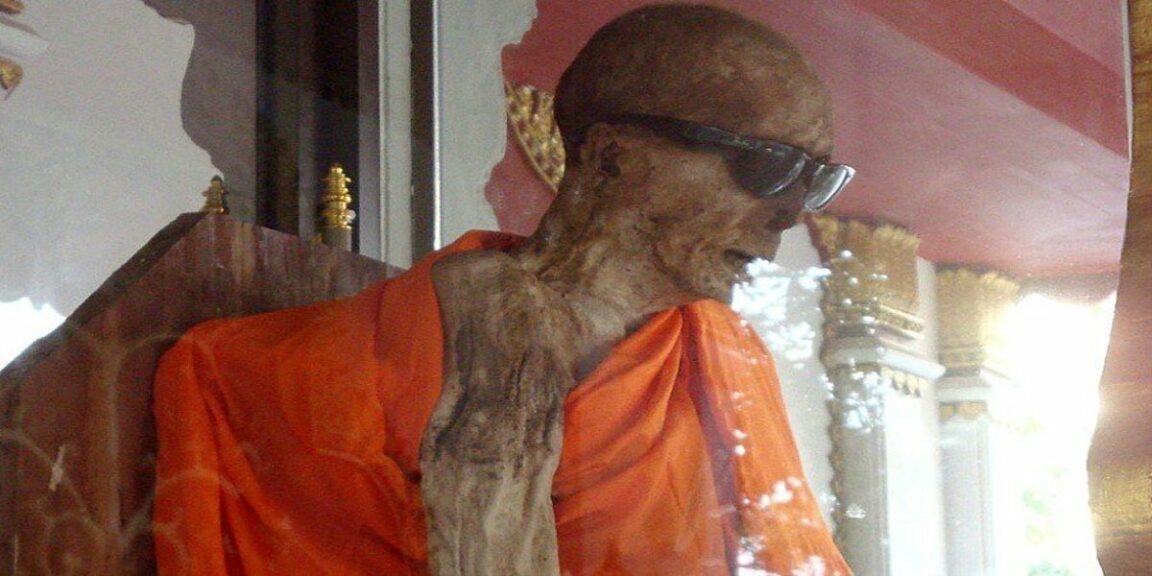Table of Contents
An ancient 11th century practice performed by the Shingon sect: monks became living mummies to be like Buddha.
In Shingon, Buddhist monks become living mummies
Buddhism is one of the most popular religions in the world and, in our century, it has become almost “a fad”.
Many come to this faith because of the dictates of peace and self-knowledge that are the basis of Buddhism.
But in every religion there is always a current that goes a little further, toward excessive radicalism. In Buddhism, the extremist current is represented by the Shingon sect.
The members of the sect set themselves the goal of becoming Buddhas on Earth through a long process called Sokushinbutsu.
In practice, this process aims to turn monks into living mummies, in the literal sense of the term. Sokunshinutsu, in fact, is a long process of mummification that is practiced when the person is still alive, conscious and in the fullness of his vital functions.
It is an ancient tradition that was often practiced in northern Japan and was born in the eleventh century.
The process
The actual rite of passage from being monks to becoming living mummies is called nyujo and lasts a thousand days.
It begins with a diet that burns all the fat , to remove fat mass from the body until you are left with the essentials for survival. The monks ate nuts and seeds and quenched their thirst with a few sips of water .
Then, for three years, the would-be living mummies ate only roots and pine bark . An essential element was the ingestion of Urushi herbal tea.
The herbal tea was toxic and served both to induce vomiting, so that the monks could expel other liquids and fats, and to prevent the formation of worms in the bodies of the living mummies.
Without the herbal tea, the monks could have died and decomposed in a short time. At the end of this process, the monk’s body is a skeleton with little skin covering it. They are living mummies.
The final result
At the end of the three years, the living mummies were placed in containers that allowed him to remain seated in the classic meditation position. There was only a tube, which allowed the living mummy to breathe, and a bell, which the mummy had to ring from time to time.
When the other monks could no longer hear the bell, the living mummy was dead. At that point the breathing tube was removed, the tomb was sealed and only reopened after another thousand days to exhume the body.
If the body had been mummified to perfection, it was placed in a display case and shown to the faithful for worship… Living mummies existed until 1879, when the practice of Sokushinbutsu was outlawed due to assisted suicide.
But it is said that, secretly, some Shingon monks still practice it today. It is a demonstration that every religion has a macabre aspect to it.




